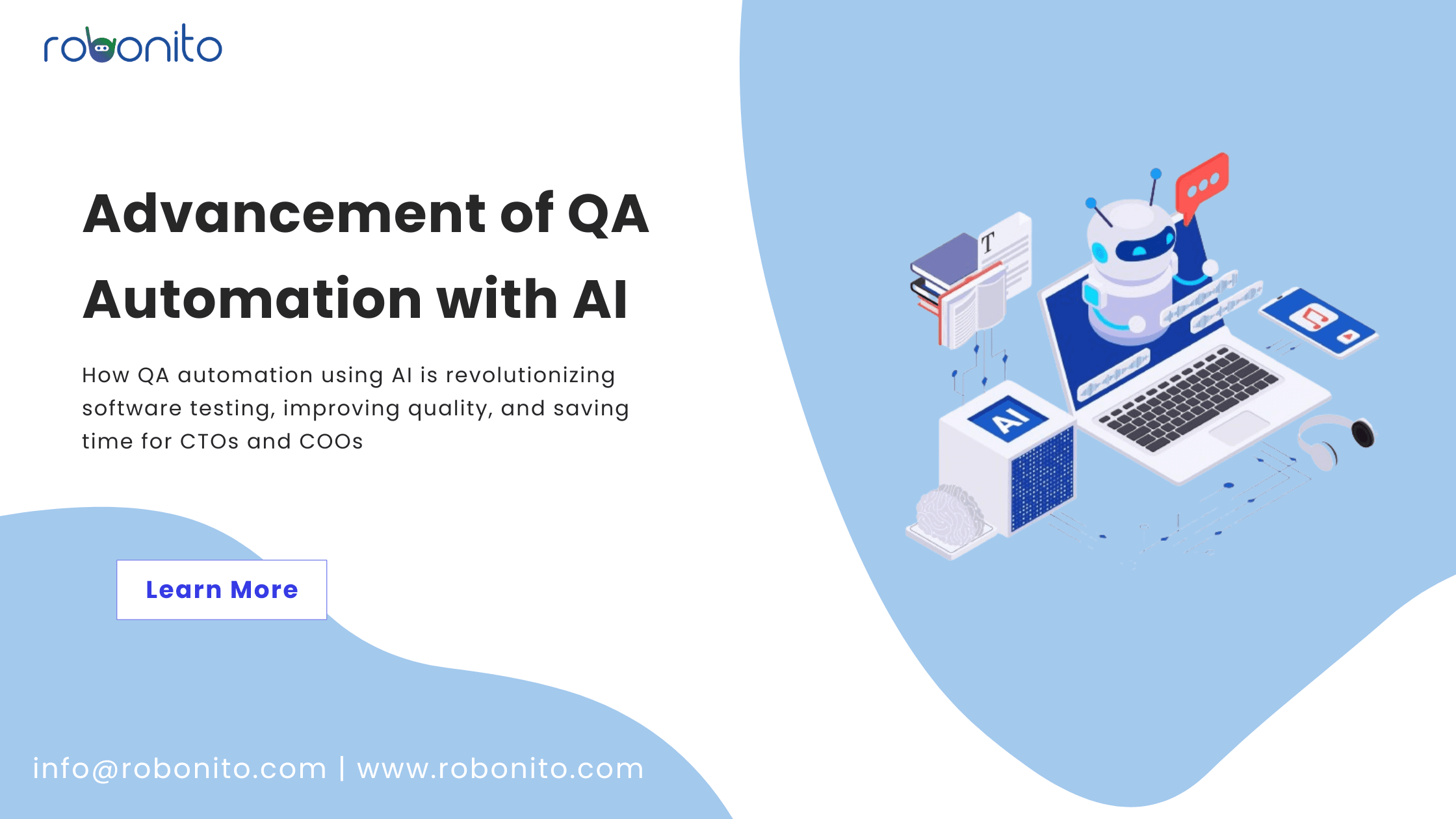Your users expect nothing short of excellence, and you must ensure that your application delivers seamless, unhindered experiences every single time.
As a CTO or Director of Engineering or VP of Engineering, you understand the high expectations, but achieving this dream requires:
- Precision
- Efficiency
- Quality imbibed culture in the organization
In a world that’s moving faster than ever and where customer demands constantly evolve, the question arises: How can you guarantee that your product consistently meets and exceeds user expectations?
→ This is where QA automation with AI becomes a need.
This blog will explore how QA testing using AI can:
- Elevate your testing processes
- Reduce manual intervention
- Application testing with AI
- Drive operational efficiency—all while ensuring optimal performance and reliability.
If you're looking for a solution that can save your most valuable resources—time and money—while delivering the quality your users expect, read on to uncover the future of AI in QA automation
What is QA Automation?
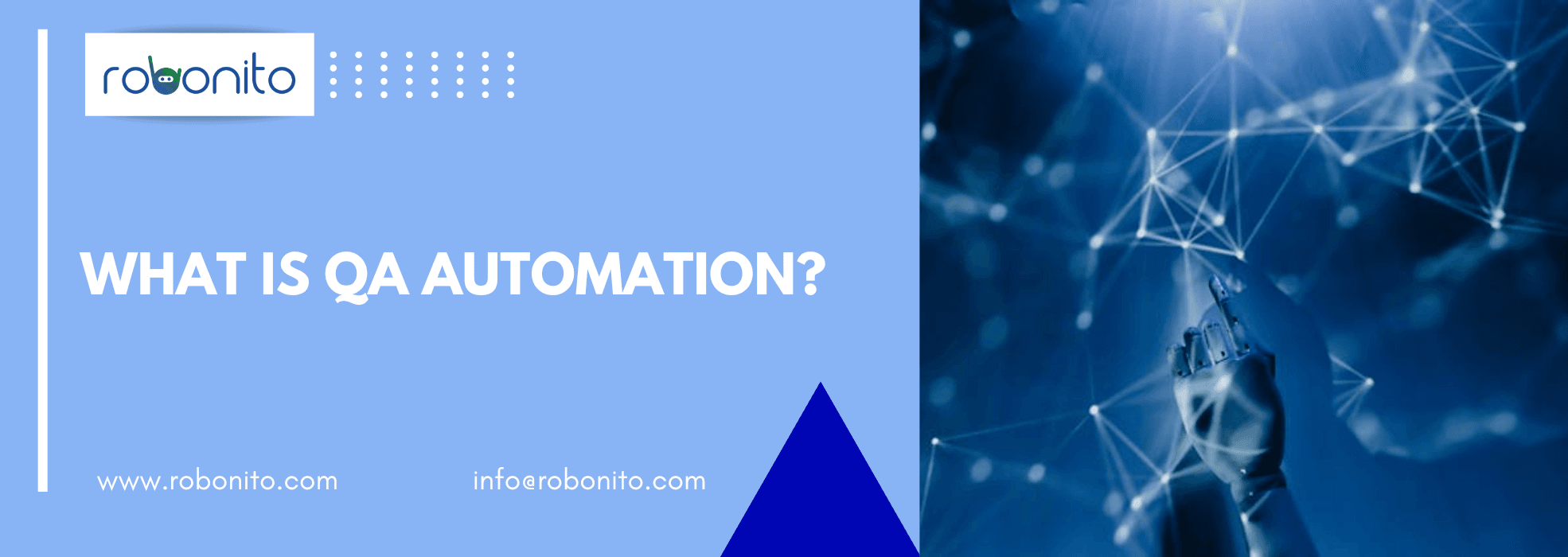 QA (Quality Assurance) automation is the practice of using automated frameworks and scripts to efficiently test software applications, especially focusing on edge cases and data input validation.
QA (Quality Assurance) automation is the practice of using automated frameworks and scripts to efficiently test software applications, especially focusing on edge cases and data input validation.
Unlike manual testing, where human testers interact with the application to identify issues, QA automation employs specialized frameworks to handle repetitive tasks, ensuring faster, more consistent, and comprehensive testing coverage.
This frees up the human capacity to spend their time solving other higher-level problems and leaves the mundane repetition to be taken care of by the crafted frameworks and pipelines.
QA automation came into existence when IT systems and applications became more complex, and the need for faster, more accurate, and repeatability tests became critical.
We needed a better way to ensure the reliability of applications while freeing up human testers to focus on more strategic, creative tasks.
With automation, those tedious, repetitive tasks are taken over by machines, allowing for quicker or autonomous turnaround without sacrificing quality.
QA automation serves several vital functions for your business:
Automates repetitive tests: Once set up, automated tests can run on their own, simulating human interactions like:
- Clicking buttons
- Filling out forms
- Navigating the application.
Detects viruses and issues: It flags any errors or performance hiccups automatically.
Runs tests repeatedly : Automation enables continuous testing without human fatigue, ensuring the application is constantly being checked, even as new updates roll out each build pipeline incorporates automated testing using CI and CD
Automation is not just about saving time, it’s also about increasing efficiency and ensuring higher-quality experiences for your users.
When you automate the most repetitive parts of the process, your team can focus on strategic initiatives—whether that’s improving the product or optimizing user experience.
The Role of AI in QA Automation
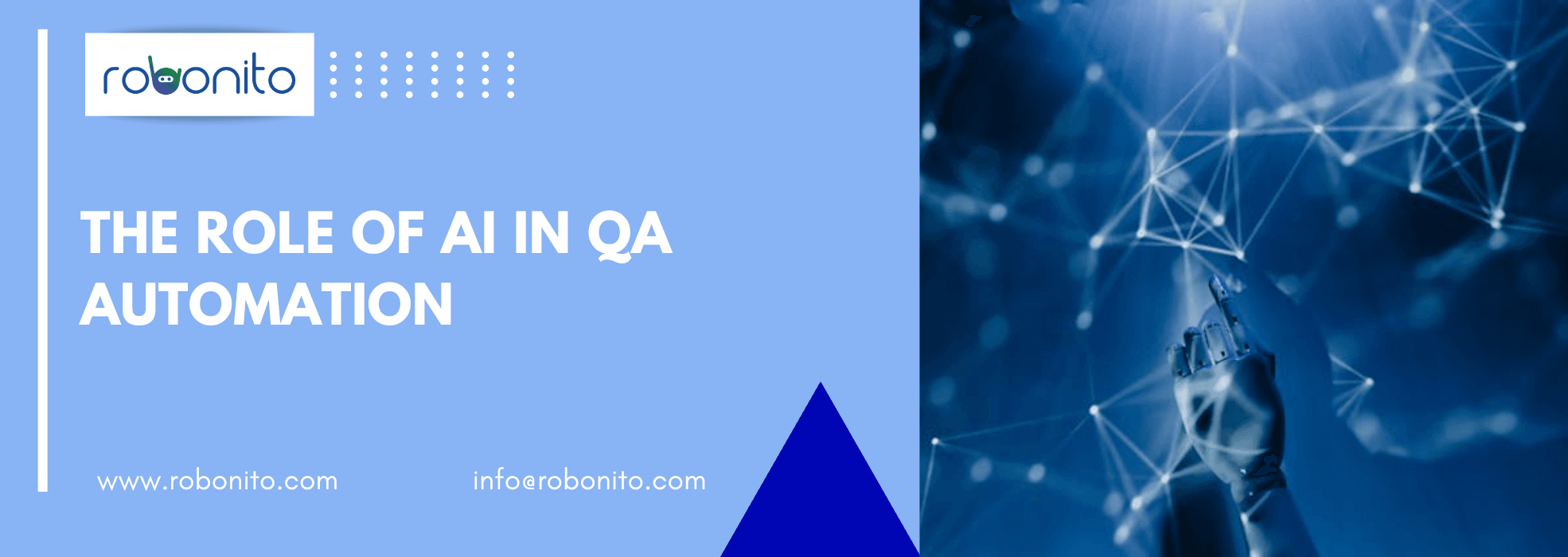
As the demand for faster, more reliable software solutions continues to grow, integrating AI in QA automation is quickly becoming essential for many organizations. While traditional automation relies on pre-defined scripts, AI introduces a dynamic, intelligent approach to testing, adapting to application changes and identifying patterns that may go unnoticed manually.
For instance, Forrester's research highlights that AI-enabled testing tools can reduce testing time by 35-50%, making it a game-changer for organizations striving for efficiency.
Furthermore, the Capgemini World Quality Report 2023-24 reveals that 64% of organizations are either implementing or planning to implement AI in their testing processes.
These findings underscore the growing recognition of AI’s potential to revolutionize quality assurance by accelerating processes, enhancing defect detection, and optimizing test prioritization.
But what exactly does AI bring to the table, and how does it differ from traditional automation?
AI-powered tools enhance the testing process by:
- Learning from past data including training for specific patterns of failure and success
- Adapting to application changes makes automation smarter and more efficient.
While traditional automation follows pre-defined scripts.
AI-driven testing dynamically:
- Adjusts
- Identifies patterns
- Determine anomalies
- Identifies potential problem areas that may not have been anticipated in manual test scripts.
- Gives the patterns and correlations which can take hours to identify manually
Key Functions of AI in QA Automation
- Predictive Analytics: AI can predict potential failures or bugs based on historical data and trends.
- Test Optimization: AI prioritizes tests, ensuring that the most critical parts of the application are tested first.
- Defect Detection: AI can detect patterns in defects, helping teams prevent issues before they escalate.
- Dynamic Test Creation: Instead of relying solely on fixed test cases, AI generates new tests as the system evolves, allowing for continuous testing.
Here’s a quick comparison:
| Feature | AI-Driven Testing | Traditional Automation | |
|---|---|---|---|
| Test Case Generation | Dynamic, based on real-time data and system changes | Fixed, based on pre-written scripts | |
| Adaptability | Learns and evolves with the software, but still requires human oversight | Requires manual updates for new features | |
| Error Detection | Predicts and identifies potential issues early, but accuracy depends on training data | Detects issues based on predefined parameters | |
| Efficiency | Automatically prioritizes critical tests, but implementation can be complex | Tests all areas equally, often resulting in over-testing | |
| Human Intervention | Reduced, but still requires significant setup, monitoring, and maintenance | High, as scripts need frequent adjustments |
Sources:
- Forrester Research: AI-enabled testing can reduce testing time by 35-50% (2023)
- Capgemini World Quality Report 2023-24: 64% of organizations are implementing or planning to implement AI for testing
- IEEE paper: “Challenges and Opportunities of AI-based Software Testing” (2021)
Key AI-Driven Techniques in QA Automation
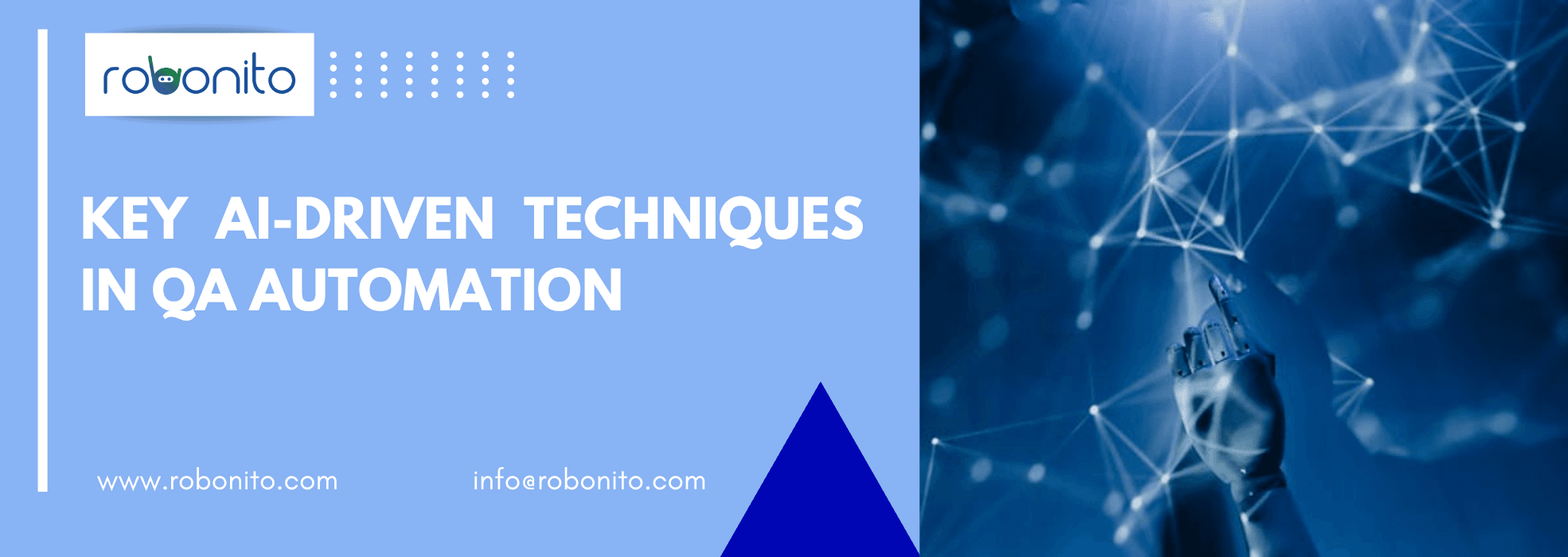
QA automation using AI has introduced the potential for powerful techniques that streamline the testing process. These AI-driven methods go beyond traditional automation by:
- Adapting
- Learning
- Optimizing test data
- Strategizing delivery based on the reports from such systems
QA Automation with AI Algorithms
At the core of AI-driven testing are several machine learning algorithms that enable dynamic test case generation, error detection, and optimization. Some of the commonly used techniques include:
Decision Trees: Decision tree models analyze historical test data to identify patterns and classify potential issues. They can help prioritize test cases based on risk and impact.
Neural Networks: Deep learning models can recognize complex defect signatures and anomalies in application behavior. They excel at visual testing, performance analysis, and security vulnerability detection.
Reinforcement Learning: RL agents can learn optimal testing strategies by interacting with the application and receiving feedback on test outcomes. This allows the tests to continuously improve over time.
Integration with CI/CD Pipelines
To fully realize the benefits of AI-powered testing, seamless integration with your Continuous Integration and Continuous Deployment (CI/CD) workflows is essential.
AI-driven testing tools can automatically:
- Trigger test suites
- Analyze results
- Provide real-time feedback to developers - enabling faster, more reliable software releases.
AI-Powered Test Coverage Analysis
AI can analyze past test results, code changes, and user behavior to identify gaps in test coverage.
By using predictive models, these tools can recommend additional test cases to improve overall coverage and catch regressions early in the development lifecycle.
AI Use Cases Across Testing Types
While AI has wide-ranging applications in QA automation, certain use cases are particularly well-suited for specific testing types:
-
Regression Testing: AI can quickly analyze code changes and automatically update test suites to ensure new features don't break existing functionality.
-
Performance Testing: AI models can predict application bottlenecks and resource constraints by learning from historical performance data and simulating user behavior.
-
Security Testing: AI-powered tools can scan for vulnerabilities, automatically generate ethical hacking scripts, and detect anomalies indicative of cyber threats.
Limitations and Challenges of AI in Testing
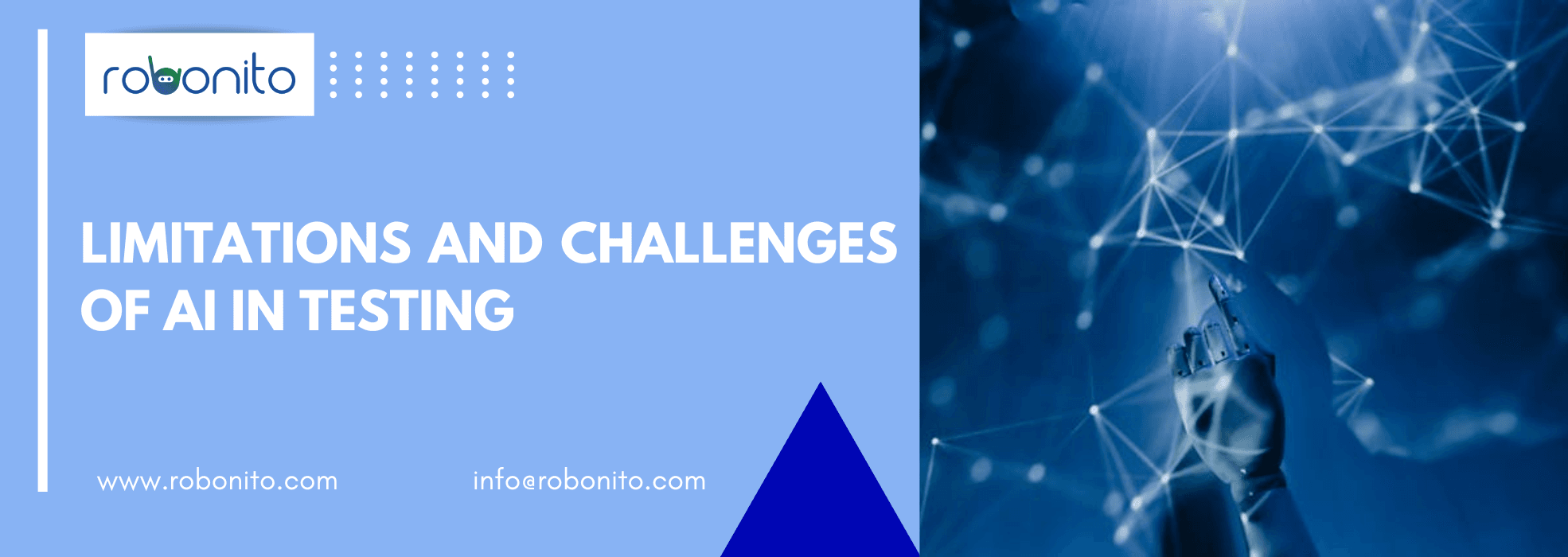
While AI offers significant benefits, it also comes with its own set of limitations and challenges that organizations must consider:
-
Reliance on Historical Data: AI models are only as good as the data they're trained on. Insufficient or biased data can lead to inaccurate predictions and suboptimal test automation.
-
Interpretability and Explainability: The inner workings of complex AI models can be difficult to understand, making it challenging to debug issues or explain test results.
-
Integration Complexity: Seamlessly integrating AI-powered testing tools with existing infrastructure, DevOps processes, and legacy systems requires significant upfront planning and ongoing maintenance.
-
Skill Requirements: Implementing and maintaining AI-driven testing requires a multidisciplinary team with expertise in software engineering, data science, and machine learning.
-
Initial Setup and Operational Costs: Deploying and operating AI-powered testing platforms can incur substantial upfront investment and ongoing expenses for hardware, software, and talent.
Getting Started with AI-Driven QA Automation
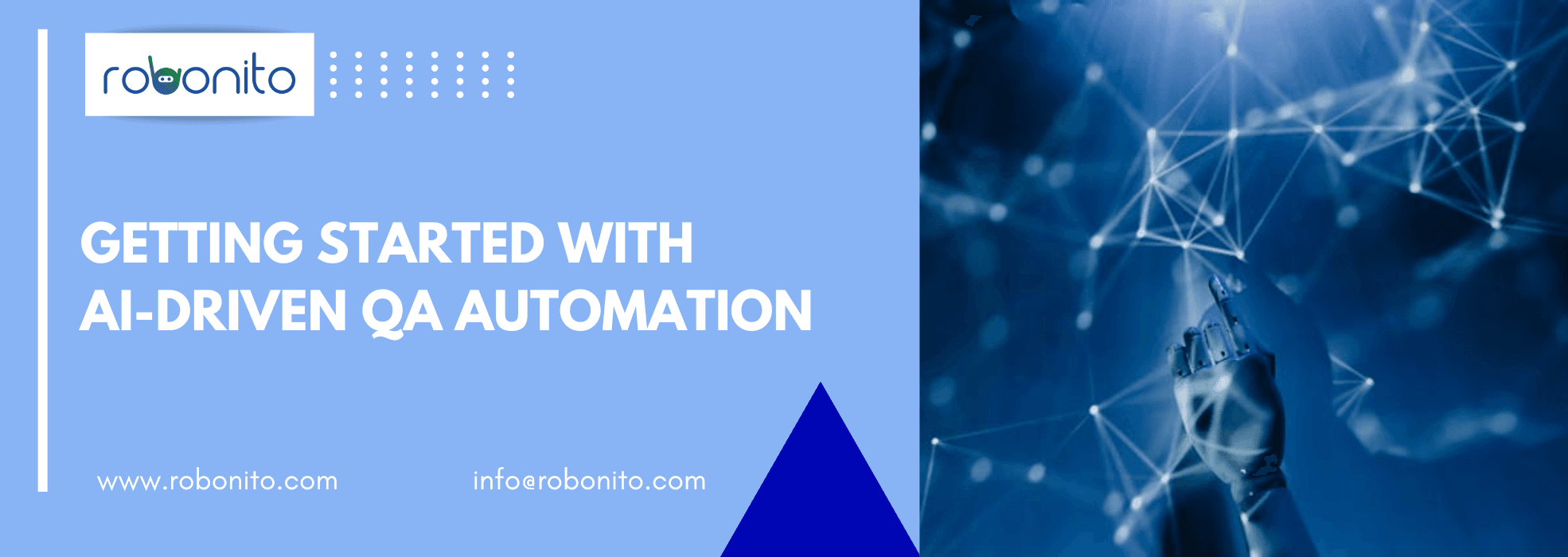
To successfully implement AI-powered testing, organizations should consider the following best practices:
-
Assess Readiness: Evaluate your current testing processes, data availability, and team capabilities to identify areas where AI can have the most impact.
-
Start Small and Iterate: Begin with a pilot project to gain experience, validate the benefits, and refine your approach before scaling across the organization.
-
Foster Cross-Functional Collaboration: Bring together experts from software development, testing, data science, and IT operations to ensure a holistic, sustainable AI testing strategy.
-
Invest in Upskilling: Provide training and support to empower your team to effectively leverage AI-driven testing tools and techniques.
-
Continuously Monitor and Optimize: Regularly review the performance of your AI-powered testing, make adjustments, and measure the impact on software quality and delivery speed.
By embracing QA automation with AI, organizations can elevate their testing processes, reduce manual effort, and deliver higher-quality software at a faster pace.
Get started today and experience the transformative power of AI in quality assurance.
Experience the Future of AI QA testing with Robonito:
- Automate 10X Faster (Save —- hours per week) (provide hours in numbers, if possible)
- Leverage Cloud Power (enabling flexibility and scalability)
- Harness AI-Driven Features (Accelerate your releases and boost your confidence in software delivery)
Install Robonito today and elevate your QA automation to new heights!
Embracing the Future of No Code AI QA Automation

This blog has explored how AI QA testing is revolutionizing the world of QA automation with AI, empowering organizations to deliver higher-quality applications faster and more efficiently.
The key takeaways are:
-
AI Algorithms Elevate Testing: Techniques like machine learning, neural networks, and reinforcement learning enable dynamic test case generation, advanced error detection, and continuous optimization of testing efforts, forming the backbone of AI in QA automation.
-
Seamless CI/CD Integration: AI powered testing tools can seamlessly integrate with your existing development workflows, triggering automated tests, analyzing results, and providing real-time feedback for application testing with AI.
-
Comprehensive Testing Coverage: Generative AI based application testing can analyze historical data to identify coverage gaps and recommend additional test cases, ensuring your applications are thoroughly vetted across regression, performance, and security domains.
-
Challenges Require Careful Planning: Implementing AI based application testing comes with its own set of challenges, including reliance on quality data, model interpretability, integration complexities, and upfront investments. Organizations must approach this transition strategically.
If you’re ready to elevate your QA processes and unlock the transformative power of AI, we invite you to explore Robonito – an AI-backed QA Automation platform.
Robonito’s cloud-based solution allows you to:
- Automate QA testing in days, not months, with No Code AI QA automation.
- Test across multiple configurations with parallel execution for rapid feedback.
- Leverage the power of no-code automation to record workflows and utilize data sources without any coding expertise.
By adopting Robonito, you can streamline your AI QA testing efforts, detect failures early, maintain high-quality standards at scale, and ultimately save dozens of hours per week.
Take the first step towards exceptional software quality and reliability. Download Robonito today and experience the future of AI-backed QA automation.

